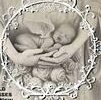How to Honor a Child Funeral Without Forcing Them To Attend
When a child passes away, parents are often confronted with the difficult decision of whether or not to invite their children to the funeral. Forcing children to attend can cause great distress, and if they are not prepared it may be hard for them to cope with the day. However, a funeral service is a time of mourning and closure, and there are ways to honour the deceased that do not involve forcing your children to attend. It is important to talk to your children about the funeral before the event takes place, and to explain what will happen. This will help them to decide whether they want to go or not and will also give them an idea of what to expect if they do decide to attend. Children take in information at their own pace and can only cope with a small amount of detail at any one time, so it is best to keep the explanations short at first. If they ask for more, you can always come back to it later. Depending on your children’s age and level of understanding, you can ask them to participate in the funeral service in any number of ways. This could include reading a poem or song, writing a message on a memory board or matted picture frame, singing a song with the rest of the guests, or letting them use a microphone to share their memories and thoughts. Alternatively, you can have a special memorial service at home and encourage friends and family to attend. A visit to the funeral home or other sites before the service can be a good opportunity to familiarise your children with what will happen. If they know what to expect it will be less intimidating for them on the day, and it will allow you to focus on your role as host. It is also a good idea to assign a buddy to each child, a trusted adult who will stay with them during the services and who they can turn to for reassurance or support if needed. Some children will decide that they do not want to attend a funeral service at all. This is not unusual, and you should respect their choice. However, it is a good idea to talk with them about how they would like to honor their sibling if they do not want to attend formal services. It is also a good idea to record the funeral so that you can play it for them at a time of their choosing. If you do decide to include your children in the funeral, you can make sure they have a good time. You can provide them with fun and unique mementos such as a balloon release, a cake made in their favorite flavor, or a photo montage that displays their smiling face throughout. You can also hire a fire truck, police car or other vehicles to escort them to the cemetery and line the driveway with luminaries.
